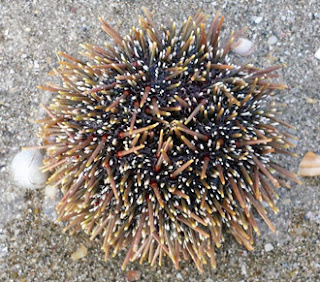Obviously I'm far from being unique in this respect. In years past New Zealanders in particular were renowned for maintaining old cars long after other developed nations had scrapped them, with Australians referring to their neighbour as the place where Morris Minors went to die. However, anti-corrosion legislation put an end to such ‘canny Kiwi' tinkering so the country has presumably lost this resourcefulness when it comes to keeping ancient vehicles on the road.
Of course cars just aren't built to last any more: modern vehicles continue to be ever more fuel efficient and built of lightweight materials, but I doubt few will last as long as the classic cars still running after half a century or more. Built-in obsolescence is partly to blame, but the sophistication of today's designs means that their repair and maintenance is becoming ever more difficult without a complete workshop and diagnostic computer. As a teenager I learnt how to change my car's spark plugs but have since been told this should now only be undertaken by professionals as the tolerances required cannot be achieved by hand!
It isn't just motor vehicles that are affected by ever increasing complexity: high-tech consumer gadgets, especially those with integrated circuits (which let's face it, is most of them these days) are seemingly built to prevent tampering or repairs by the end user. Yet this is a fairly recent phenomenon. In my grandparents' generation the most sophisticated item in their house was likely to be a radio that used vacuum tube technology, but a cheaper alternative was available in the form of a do-it-yourself galena or pyrite crystal radio. Even children - Arthur C. Clarke amongst them - were able to build these self-powered devices, which worked rather well except for the fact that they had no speaker and so the user had to listen via headphones. It might seem unlikely that such as device was easy to construct until you remember that pioneer aircraft were built by bicycle manufacturers!
In contrast, the most advanced technological item my parents would have had until their twenties - when television sets started to become affordable - would have been a mass-produced transistor radio. Compared to the valve-infested sideboard gramophone, simple problems such as loose wires in these radios could be repaired with basic tools such as small screwdrivers, needle-nose pliers and a low wattage soldering iron. Whilst requiring a bit of skill and some understanding of wiring, such repairs were still within the range of many consumers.
Today, my experience suggests that the expendable consumerism that first became overt in the late 1960's is a key mind set in developed nations, with do-it-yourself work on gadgetry largely absent. In fact, it is frequently cheaper to buy a replacement item than to have it repaired or purchase the tools in order to attempt those repairs yourself. The speed with which newer models are released is such that it may even prove impossible to source a replacement part only a few years after the item has been purchased. This inevitably increases our distance from the inner workings of the ever more numerous high-tech consumer gadgets we now surround ourselves with. Surely it is a great irony that despite our ability to operate all of them, the vast majority of users have little idea of the fundamentals of the technologies involved?
My own experience with attempting to fix consumer electronics is rather limited, but I can see that manufacturers are deliberately trying to prevent this by using techniques such as hiding screw heads and using one-way pins, ensuring that any attempt to dismantle an item will snap parts within the casing. Additionally, the more sophisticated the technology, the more sensitive it seems to be. An example from a rather different sphere of activity comes from 1976, when a defecting Soviet Air Force pilot delivered a state-of-the-art fighter jet into the hands of Western intelligence. The MiG-25 ‘Foxbat' was discovered to be using valve-based rather than solid-state avionics, yet despite its primitive appearance the electronics were both extremely powerful and able to withstand immense physical stress, which is obviously of great importance in such aircraft.
Back to household gadgetry, I've seen an old cathode ray tube television repaired after water was accidentally tipped down the back of it, whilst flat screen computer monitors that were inadvertently cleaned with water - not by me, I hasten to add - were sent straight to the scrap heap. That isn't to say that there aren't a few brave souls who post internet videos on how to disassemble devices such as iPads in order to fix hardware issues, but I think you would either have to be very confident or quite rich before attempting such repairs. There are also websites dedicated to technology hackers, who enhance, customise or otherwise amend consumer gadgets beyond their out-of-the-box capabilities. Again, I don't have the confidence for this sort of thing, especially since there are hidden dangers: a digital camera for example contains a flash capacitor that can store - and deliver to the unwary - a charge of several hundred volts. Ouch!
So the next time someone declares their bewilderment with the ever-widening array of consumer gadgetry, or bores you with a piece of New Age nonsense, you should remember although we are surrounded with some extremely sophisticated devices, various causes have conspired to remove insight into their inner workings. Our consumerist age is geared towards acceptance of such items whilst limiting our involvement to that of end user. And of course I haven't even mentioned the ultimate fundamentals behind all this integrated circuitry, quantum electrodynamics...







